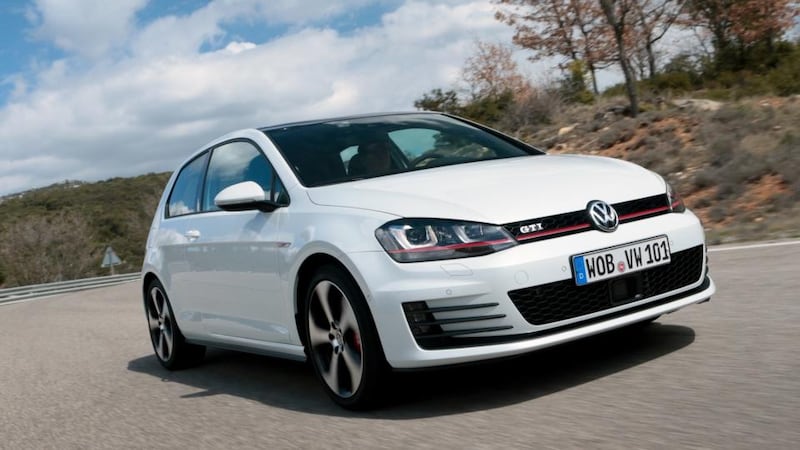When Volkswagen created the Golf GTI, in 1976, few anticipated its global success. The car was meant to be a souped-up family hatchback. It became a big hit with well-off younger drivers.
Thirty-eight years later, in its seventh incarnation, the GTI still has a unique appeal. Hot hatches crowd the market, each with its own strengths, yet the GTI is still the one to have on the driveway when it comes to status, even if some of the alternatives offer more power and better value for money.
And what of the Golf GTD, supposedly a diesel-powered GTI? Can it really cut the mustard? And does either really outclass its growing list of rivals?

On paper the GTI won't beat all of its main competitors. Its 2.0-litre TSI petrol engine produces 220hp and 350Nm of torque. The Ford Focus ST has 250hp, the Renaultsport Megane 265hp, and even the new Seat Leon Cupra, built on the same MQB platform as the Golf, has two variants: a 265hp model and a 280hp version.
Volkswagen offers a Performance Pack for the GTI that increases the power by 10hp, to 230hp, along with larger brakes and an electronic “torque vectoring” front locking differential. The GTI’s interior is superior to its main rivals’, with high-quality switchgear and a sense of elegance throughout.
Both the GTI and GTD we tested were equipped with the standard six-speed manual gearbox, which allows a more involved driving experience. The gear change is light and fluid, although with a longer throw than the agile Renaultsport Megane.
To get the most from each model we took them on to a damp Mondello racetrack on a rain-sodden day. Driving the GTI and GTD back to back on a track gives you a heightened sense of each car’s traits.
The GTI is far more alive on initial acceleration, but its power is hampered early in the wet when the electronic stability program cuts in and restricts the power to the front wheels. If you set the ESP to sport mode you can increase pressure on the throttle without the electronics interfering too much. It’s a pity, however, that you cannot shut down the traction and stability programs.
My only other gripe with this car is the infuriating electronic handbrake; there’s no place for it in a hot hatch. The GTI’s chassis is well balanced and predictable, and on the road the ride is quite firm but not uncomfortable.
The GTD threw up a few surprises on track. Its power disadvantage did not hamper it too much, as a result of the wet surface. Where the GTI struggled at times to transfer all of its power to the track, the GTD made use of its extra torque to take some corners in a higher gear.
The engine sound in the cabin is muted in comparison with the GTI’s growl. Handling is pretty comparable, but it’s not until you stretch the GTD’s engine up the rev range that you reach its sweet spot – somewhat unusual for a diesel. The results are in the lap times: just 2.2 seconds separates the two cars, a sign of diesel cars’ progress in recent years.
The Golf GTD makes a strong case for a diesel-powered hot hatch. Like the GTI, it faces tough competition from fellow Volkswagen Group brands. The Skoda Octavia RS TDI and Seat Leon FR TDI both use the same 2.0-litre diesel engine as the GTD and offer the same power. The Leon is considerably less expensive and better equipped.
Before driving both of these Golfs I expected to lean towards the GTD as the car to own and run. But it costs at least €2,000 more to buy than the GTI, which is a difficult difference to justify.
With its improvements in efficiency and emissions, the GTI isn’t vastly more expensive to run than the GTD, so save yourself a few euro and purchase the GTI.
It’s not without flaws, and it would benefit from more power, but the GTi’s pedigree, prestige and character both on the track and off make it the better buy of these two – and well able to keep pace with the competition.











